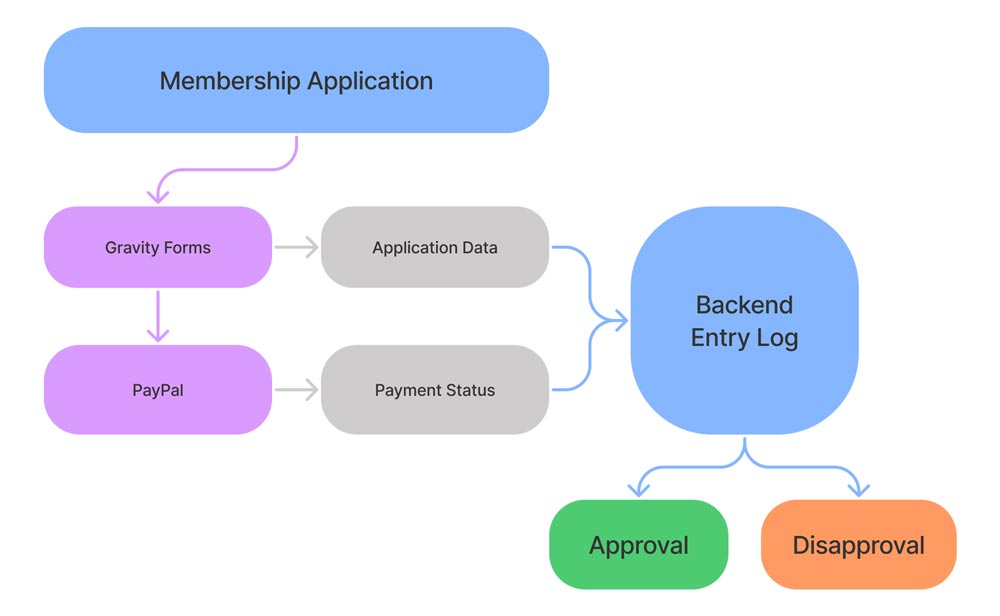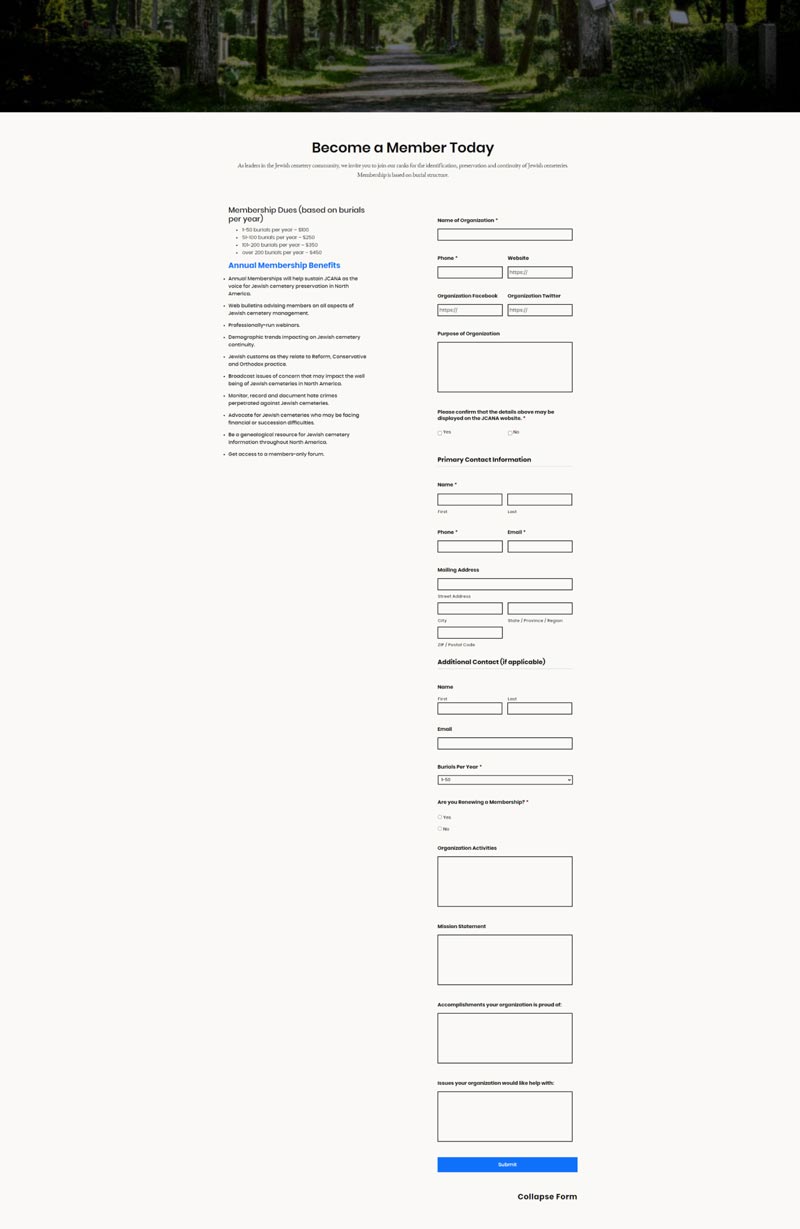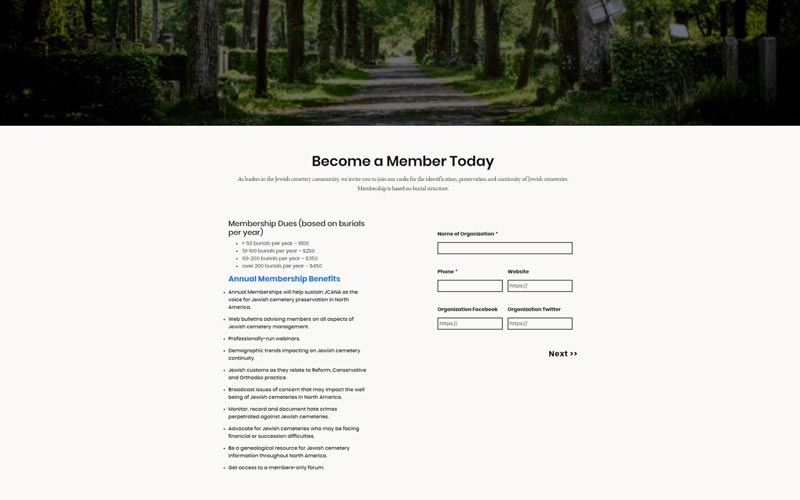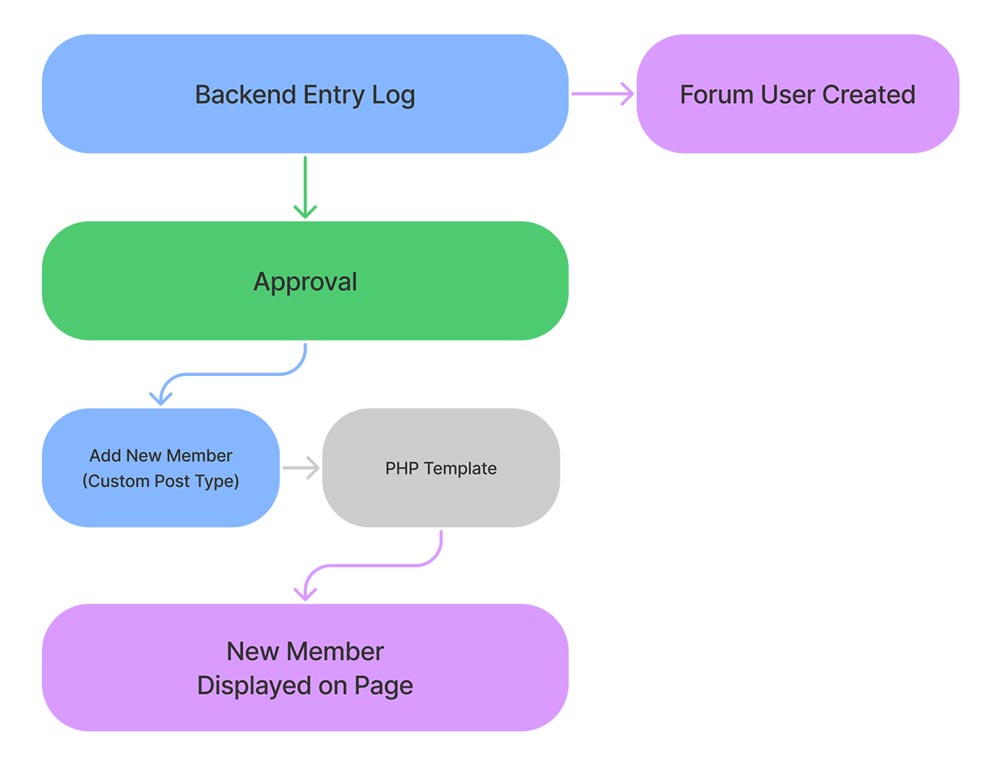Connecting with a new generation
The Jewish Cemetery Association of North America (JCANA) devotes themselves to the sanctity and continuity of Jewish cemeteries in honor of ancestors as well as future generations. Their purpose is to raise awareness and provide resources to sustain and preserve Jewish cemeteries.
My role in this project:
- User Experience
- User Interface
- Information Architecture
- Frontend Development
- Copywriting
- SEO
Key points and interests:
- An updated online prescence
- A space to chat & connect
- Sponsorship automation
The Problem(s)
The existing JCANA site was built from Photoshop slices and HTML tables back in ‘09. Needless to say, the organization sought after a more current look for their online presence in order to appeal to the upcoming generation of cemetery leaders. The new site needed to do a few things:
- JCANA membership comes with a yearly fee. Before the rebuild, these memberships were managed internally by Board Members and paid by check or single PayPal transaction, resulting in a lot of inaccuracies, so a new way to manage memberships was in order.
- With the new site came a new benefit for paying members of JCANA—a members-only forum where the community could speak amongst each other to share ideas or collaborate on efforts to preserve cemeteries and Jewish culture.
- Updating the old JCANA site required HTML knowledge...which left them at the mercy of their developer, so WordPress became the obvious choice of platform.
- In addition, JCANA is partially funded by donations. I was asked to create a space where donor information could be proudly displayed in exchange for their contribution.
The Solution(s)
Making membership tracking easier
The existing membership tracking process was what I would describe as a little too analog. As part of streamlining this process, membership forms were digitized and built directly into the frontend of the site, where users could submit membership applications and process payment (through PayPal) all at once. From there, the submission data was displayed in the WordPress Dashboard ready for review and approval from the Board of Directors.

Digitizing the membership application form resulted in a really long page. What about users who are curious about joining but aren’t ready to apply? There’s no need to make them scroll down the whole page, only to discover the information relevant to their interests ended a while ago. The fix for this was collapsing the form into a two-step process, shortening the form in favor of shifting the visual balance over to the rest of the content describing membership benefits.

 As is apparent, the information about membership benefits is much more easily digested when the form is collapsed.
As is apparent, the information about membership benefits is much more easily digested when the form is collapsed.
In retrospect, I would have solved this problem a bit differently today. A two-step form allows for a two part submission—in other words, I missed a valuable opportunity to generate a leads list of users who were “curious about membership but did not complete the application”. This list could have been used for membership retargeting!
A place to communicate
After memberships were approved, a user account was created using the contact information provided by the applicant. The user account granted members access to an exclusive forum (powered by bbPress, a WordPress forum plugin). Fortunately, using bbPress saved tons of time on page building...all that was left was to write some CSS that made it fit in with the rest of the site.
Last I checked, the forum had active members discussing topics such as headstone preservation, how to deal with trespassers, and other such cemetery-related topics. Unfortunately, since leaving the company for whom I worked while building the site, I no longer have access to the forum.
Providing a solution for codeless updates
JCANA has lots of members, Board Members, donors, and service providers that frequently need updating. There were four categories in total, each organized into their own custom post type in WordPress:
- Founding Members
- Regular Members
- Board of Directors
- Service Providers
In combination with Advanced Custom Fields, an entirely codeless solution for managing each category was provided.

For donors and service providers, similar solutions for application forms, payment processing, management were employed to display them in the appropriate area.
This case study is still being written. Check back later to see if more has been added!